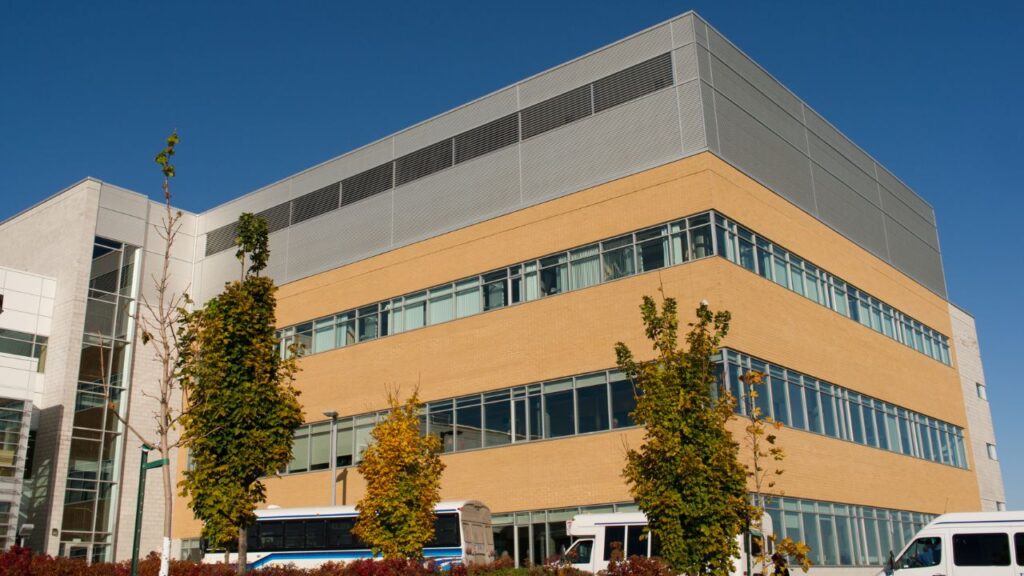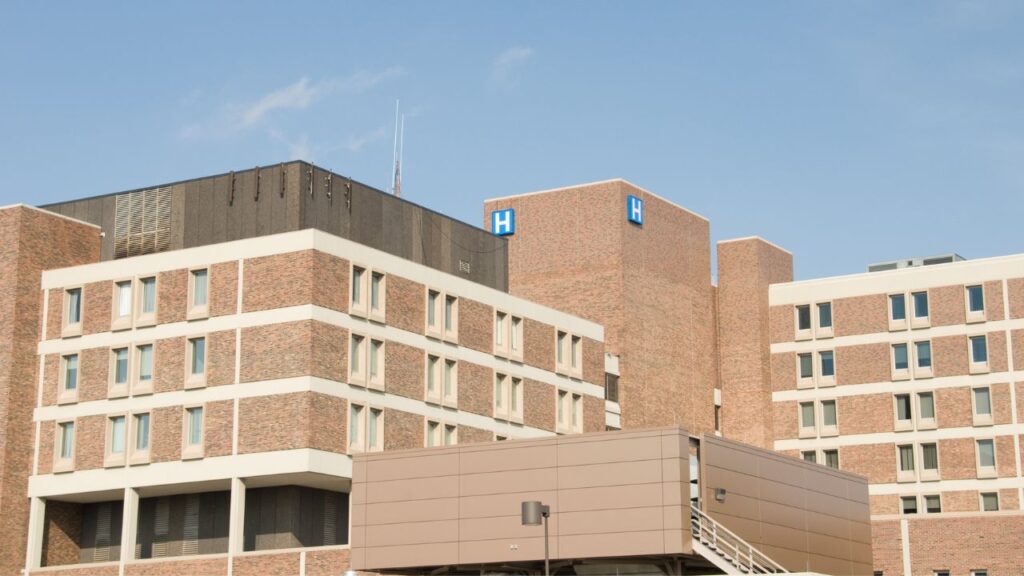Bid Strong, Bid Smart – Try Our Hospital Construction Cost Estimating Service!
- Accurancy
- Efficiency
- Transparency
- Customization
- Time Saving
- Professionalism
- Cost Control

Hospital buildings, as critical components of healthcare infrastructure, demand unwavering attention to safety, durability, and structural integrity. Over time, the concrete elements of these facilities may undergo wear and damage due to a variety of factors. Managing hospital building concrete repair costs is a crucial aspect of ensuring a resilient and safe environment for patients, staff, and visitors. This article delves into the complexities of hospital building concrete repair costs, exploring the influencing factors and presenting strategies for effective cost management.

The extent of damage to concrete structures is a pivotal determinant in the overall repair costs incurred by hospital facilities. Minor issues, such as superficial cracks, are generally less expensive to address than extensive structural damage. Regular inspections play a crucial role in early issue identification, allowing for timely interventions that can prevent the escalation of problems. By implementing a proactive maintenance strategy and promptly addressing minor concerns, hospitals can significantly minimize repair expenses over time. This approach not only safeguards the structural integrity of the facility but also represents a fiscally responsible investment in the longevity of the infrastructure.

Fully Insured License
Hire Contractor For Hospital Construction

Make Informed Design Decisions Showcase Your Design Ideas
Get RenderingHospitals, as specialized environments dedicated to healthcare delivery, impose distinctive infrastructure requirements. These demands extend beyond conventional standards, necessitating features like antimicrobial surfaces and strict adherence to stringent hygiene standards. When it comes to repairing or upgrading concrete surfaces within healthcare facilities, meeting these specialized criteria introduces additional costs compared to standard building repairs. The investment in these healthcare-specific features is, however, indispensable. It reflects a commitment to creating an environment that prioritizes patient well-being, infection control, and the highest standards of healthcare excellence, justifying the associated expenses as essential for the hospital’s core mission.
The accessibility of damaged concrete areas directly influences the costs associated with their repair. Elements located in hard-to-reach areas or spaces with limited access may require specialized equipment, additional labor, or more intricate repair methodologies. These factors contribute to an increase in overall repair expenses. Strategic planning that considers the logistical challenges of accessibility and location is, therefore, crucial. By anticipating and addressing these challenges early in the planning stages, hospitals can optimize repair processes, ensuring both cost-effectiveness and the thorough restoration of damaged concrete elements.
Urgent repairs to critical areas within hospital facilities, especially those affecting patient care or safety, often necessitate expedited repair schedules. While prompt interventions are essential, accelerated timelines can lead to increased labor costs due to the need for additional workforce or extended work hours. Strategic planning becomes imperative in balancing the urgency of repairs with fiscal responsibility. Hospitals must carefully assess the criticality of the repair, ensuring that the speed of intervention aligns with safety priorities while maintaining cost-effective measures.

This delicate balance guarantees the swift restoration of crucial elements without compromising the financial integrity of the project.
The choice of repair materials plays a pivotal role in determining overall repair costs. Opting for high-quality, durable materials may involve higher upfront expenses, but this strategic decision contributes to long-term cost-effectiveness. High-quality materials minimize the need for frequent repairs and ongoing maintenance, offering a pragmatic and fiscally responsible approach to concrete restoration. The investment in superior materials is an investment in the enduring resilience of the hospital’s infrastructure, ensuring that repaired elements withstand the rigors of time and continuous use. This focus on durability not only aligns with stringent healthcare standards but also positions the hospital for sustained cost savings over the facility’s lifespan.
Proactive maintenance programs stand as a cornerstone in the effective management of hospital concrete repair costs. By implementing regular inspections and preventive measures, healthcare facilities can identify potential issues at their nascent stages. Timely interventions in response to these findings significantly reduce the risk of extensive damage, subsequently leading to lower overall repair costs. The proactive approach ensures that minor concerns are addressed before they escalate, preserving the structural integrity of the hospital infrastructure and fostering a culture of cost-effective, long-term facility management. Hospitals that prioritize proactive maintenance programs invest in the sustainability of their structures, promoting both fiscal responsibility and the seamless delivery of healthcare services.

Conducting a comprehensive lifecycle cost analysis is a crucial step in making informed decisions about concrete repair materials. While certain materials may incur higher initial costs, their durability and longevity may result in lower overall expenses over the building’s lifespan. This strategic consideration allows hospital administrators and facility managers to assess the total cost of ownership, encompassing not only upfront expenses but also maintenance, operational, and replacement costs. By factoring in these long-term considerations, hospitals can select repair materials that offer optimal cost-effectiveness, aligning with broader financial goals and ensuring sustained durability without sacrificing quality.
The prioritization of repairs based on the criticality of affected areas offers a pragmatic and phased approach to concrete restoration. By addressing urgent issues first, hospitals ensure that immediate safety concerns are handled promptly. This strategic prioritization not only aligns with the overall safety and functionality goals of the healthcare facility but also facilitates effective cost management over an extended period. Hospitals can strategically allocate resources, focusing on critical repairs before addressing less urgent concerns, thereby spreading repair costs across manageable timelines and promoting an efficient allocation of financial resources.
Seeking competitive bids and engaging in supplier negotiations emerge as effective strategies for mitigating hospital concrete repair costs. Establishing relationships with reliable suppliers and contractors can lead to favorable pricing, stable supply chains, and efficient procurement of materials and services. The competitive bidding process ensures that hospitals obtain the best possible value for their investment, allowing for cost savings without compromising on the quality of materials or workmanship.

By actively participating in negotiations, hospitals position themselves to secure advantageous terms, fostering a collaborative and cost-efficient approach to the procurement of essential resources for concrete repairs.
Embracing technological advancements in concrete repair represents a proactive approach to enhancing efficiency and potentially reducing labor costs. Staying informed about industry developments enables hospitals to adopt cost-effective technologies, such as innovative repair materials or advanced application methods. The integration of technology into concrete repair processes can streamline operations, expedite repairs, and contribute to overall cost savings. Hospitals that stay at the forefront of technological innovation position themselves to benefit from efficiency gains, ensuring that concrete repairs are not only effective but also economically advantageous in the ever-evolving landscape of construction and maintenance practices.
Minor cracks can be addressed with a modest budget, starting at around $5 per square foot, while extensive spalling or structural repairs may demand a considerably higher investment, reaching $50 per square foot or more.
Managing hospital building concrete repair costs is a multifaceted endeavor, influenced by factors such as the extent of damage, specialized healthcare requirements, accessibility, urgency, and the quality of materials. Strategic approaches, including proactive maintenance programs, lifecycle cost analysis, prioritization of repairs, competitive bidding, and technology integration, play pivotal roles in effective cost management. While minor repairs may start at around $5 per square foot, addressing extensive structural issues can incur costs of $50 per square foot or more. By adopting a holistic and informed approach, hospitals can ensure the longevity, safety, and cost-effectiveness of their infrastructure, prioritizing both fiscal responsibility and the seamless delivery of healthcare services.
The repair costs depend on factors such as the extent of damage, specialized healthcare requirements, accessibility, urgency, and the quality of materials. Each of these elements influences the overall expense of concrete repairs in hospital buildings.
Implementing proactive maintenance programs, including regular inspections and preventive interventions, is key to identifying and addressing issues early on. Timely interventions can significantly reduce the risk of extensive damage, contributing to lower repair costs over time.
Hospitals have unique infrastructure demands, requiring features like antimicrobial surfaces and adherence to stringent hygiene standards. Meeting these healthcare-specific criteria introduces additional costs compared to standard repairs, reflecting the commitment to patient well-being and healthcare excellence.
Opting for high-quality, durable materials may incur higher upfront expenses but contributes to long-term cost-effectiveness. Superior materials minimize the need for frequent repairs and ongoing maintenance, ensuring the enduring resilience of the hospital’s infrastructure.
Strategic planning is crucial in balancing the urgency of repairs, especially those affecting patient care or safety, with fiscal responsibility. Assessing the criticality of repairs ensures that interventions align with safety priorities while maintaining cost-effective measures.
The cost can vary widely based on the severity of damage and repair methods. Minor cracks may be addressed with a modest budget, starting at around $5 per square foot, while extensive spalling or structural repairs may demand a considerably higher investment, reaching $50 per square foot or more.
Here I am going to share some steps to get your hospital building concrete repair cost estimate report.
You can send us your plan on info@estimatorflorida.com
Before starting your project, we send you a quote for your service. That quote will have detailed information about your project. Here you will get information about the size, difficulty, complexity and bid date when determining pricing.
Our team will takeoff and estimate your project. When we deliver you’ll receive a PDF and an Excel file of your estimate. We can also offer construction lead generation services for the jobs you’d like to pursue further.



561-530-2845
info@estimatorflorida.com
Address
5245 Wiles Rd Apt 3-102 St. Pete Beach, FL 33073 United States
561-530-2845
info@estimatorflorida.com
Address
5245 Wiles Rd Apt 3-102 St. Pete Beach, FL 33073 United States
All copyright © Reserved | Designed By V Marketing Media | Disclaimer